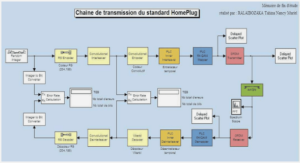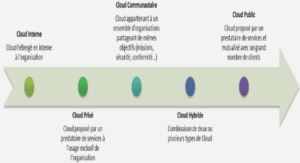Sovereign Wealth Funds Characteristics
Investment Behavior of Sovereign Wealth Funds
The global financial system has witnessed, in the first decade of the 21st century a growing number of SWFs with a sizable asset under management. Although SWFs are by no means a recent phenomenon, as we may trace back their root to 1950s, since the first sovereign wealth fund Kuwait Investment Authority was established in 1953 alongside the initial oil strikes in the Persian Gulf.The systematic growth, coupled with sovereign character and lack of transparency have provoked a variety of policy concerns among the host countries (countries that receive the investments of SWFs), particularly after the bids that have aimed to takeover some key strategic sectors in the United States. For instance, the most notable two cases were attempted by foreign corporations, state-owned or controlled entities, the first one took place in 2005 when a Chinese company – China National Offshore Oil Company (CNOOC) – tried to purchase Unocal, a U.S. oil producer; whereas, the second unaccomplished bid case happened a year after, when Dubai Ports World tried to acquire the British-based Peninsula and Oriental Steam Navigation Company (P&O) (Cohen, 2009). With these two cases in mind, debates have boiled upon the real investment objectives of SWFs and whether they serve as instruments to reach non-commercial ends. The reaction in host countries has taken many facades, which ranges from the legitimate fears and concerns to extreme actions.
Actually, concerns were not all with political flavor. Therefore, some researchers have raised concerns about the negative impact on firms and market stability as well. For example, Jen and Miles (2007) believed that the investment behaviors of SWFs would lower international risk aversion index, raise US treasury bonds return and P/E ratio (price to earning), thus they got to the conclusion that SWFs would exacerbate market volatility.
Some scholars indeed went so far to claim that SWFs were a threat to the whole capitalistic system. Summers (2007) wrote in the July edition of Financial Times that the concerns raised over sovereign wealth funds are “profound and go to the nature of global capitalism.” However, some economists held different views among them (Truman, 2007) who argued that SWFs should not be considered a threat, as long as every country tries its best to normalize its behaviors and improve the transparency. He insisted as well, that all these concerns remain “largely in the realm of the hypothetical.” (Truman, 2008, p.4) .
To deal with such concerns, two approaches have been taken. In one hand policy responses, while the second was empirical studies aiming to get robust responses to what extent these concerns were real. Policy responses, among the host countries aiming to overcome the potential misuse of SWFs, manifested in two broad ways:
First, individual policy actions have taken place among the G7 countries. Since most enacted policy measures were justified on the basis of defending national security and/or protecting strategic industries. For example, in the United States the Congress passed the Foreign Investment and National Security Act (FINSA) of 2007 (Cohen, 2009).
Second, given the heterogeneous, somehow conflicting concepts about what stands as strategic sector, and from fears of disintegration of financial markets through growing protectionism collective approaches have been initiated. The key initiative came formally after the call of the G7 the IMF and OECD to take up the issue and dispatch the roles as follows: the IMF would work with SWFs home countries to develop principles which guide the SWF behaviors, whereas the OECD would deal with the host countries side (Truman, 2011) .
At the IMF front, series of meetings, which are best known as the International Working Group of Sovereign Wealth Fund (IWG-SWF), have taken place discussing how should SWFs be structured, governed, and managed. By October 2008, the IWG reached an agreement which is called by the name Generally Accepted Principles and Practices (GAPP). In fact, the aim of GAPP was to dispel fears and anxiety toward the practice of SWFs (Cohen, 2009).
On the other front, the OECD efforts were less fruitful resulting in no change in the already existent framework applied to cross-border investments (Truman, 2011). There has been a growing amount of empirical studies addressing different aspects of SWFs’ investment behaviors, we may classify the existent literature into three categories: Studies under this category analyze the impact of SWF investments on firm’s asset prices. Thus, most studies use event-study methodology to assess the reaction of prices after the announcement of SWFs investment. All these studies document a significant positive mean abnormal return around the announcement date, followed by negative long-run returns (Fotak, Bortolotti, & Megginson, 2008; Kotter & Lel, 2011; Johan, Knill, & Mauck, 2013; Bortolotti et al., 2010). While Fernandes (2011) uses a different methodology (Tobin’s Q) in which he focuses on SWFs holdings, rather than transactions. His results are in contrast with the above studies, he finds that firms with higher SWF ownership have better firm valuations and operating performance.
This category deals mainly with the determinants of SWF investments, since the SWFs’ motives were the debate fuel. The study of S. Bernstein et al. (2013) examines the direct private equity investments of SWFs across different geographies with reference to governance structure. The authors find that where politicians are involved in governance, the investment decision leans toward investing in home country, which is not considered a problem in itself given the issue is well-known under the home bias puzzle, but the fact that these SWFs are likely to invest at home even with high equity prices and low P/E rates, signals that SWF investments are politically influenced. Furthermore, the results on the SWFs’ investment behaviors given the involvement of external managers go in contrast with the result when politicians are involved, which is another sign strengthening the claim of political influence in the investment decisions.
|
Table des matières
Abstract
Arabic Abstract
Acknowledgments
List of Tables
List of Figures
1 Introduction
1.1 Research Problem
1.2 Research Objectives
1.3 Thesis Structure
2 Sovereign Wealth Funds Profile
2.1 Introduction
2.2 Sovereign Wealth Funds Characteristics
2.2.1 Definition and Types
2.2.2 The Rationale to Set up Sovereign wealth Funds
2.2.3 Institutional and Governance Structure
2.3 SWF Portfolio Management
2.3.1 Investment Policy Statement
2.3.2 Investment Implementation and Evaluation
2.4 Investment Behavior of Sovereign Wealth Funds
2.5 Conclusion
3 Portfolio Theory Background
3.1 Introduction
3.2 Expected Utility and Risk Aversion
3.2.1 The Expected Utility Hypothesis
3.2.2 Risk Aversion
3.2.3 Standard Utility Functions
3.2.4 Mean-Variance Preferences
3.3 Mean-Variance Analysis
3.3.1 Mean-variance Criterion:
3.3.2 Diversification
3.3.3 Risky Efficient Frontier
3.3.4 Optimal Risky Portfolio
3.3.5 The Capital Market Line
3.4 Asset Pricing Models
3.4.1 Capital Asset Pricing Model
3.4.2 Intertemporal Capital Asset Pricing Model
3.5 Conclusion
4 Asset Return Modeling
4.1 Introduction
4.2 Asset Return Predictability
4.2.1 Efficient Market Hypothesis and Return Predictability
4.2.2 Econometric Issues
4.3 Asset Return Modeling and Testing
4.3.1 Bivariate Testing
4.3.2 Vector Autoregressive Model
4.4 Empirical Methodology
4.4.1 VAR Setup for Asset Returns
4.4.2 Data Description
4.4.3 Result Analysis
4.5 Conclusion
5 Dynamic Portfolio Choice
5.1 Introduction
5.2 CCV Framework
5.2.1 Preferences and Utility Function Choice
5.2.2 Solution Methodology
5.2.3 Measuring Value Function Loss
5.3 Emperical Application
5.3.1 Data description
5.3.2 Result Analysis
5.4 Conclusion
6 Conclusion
Appendix A: Useful Background
Appendix B: Predictability and Asset Allocation Results
Bibliography
![]() Télécharger le rapport complet
Télécharger le rapport complet





